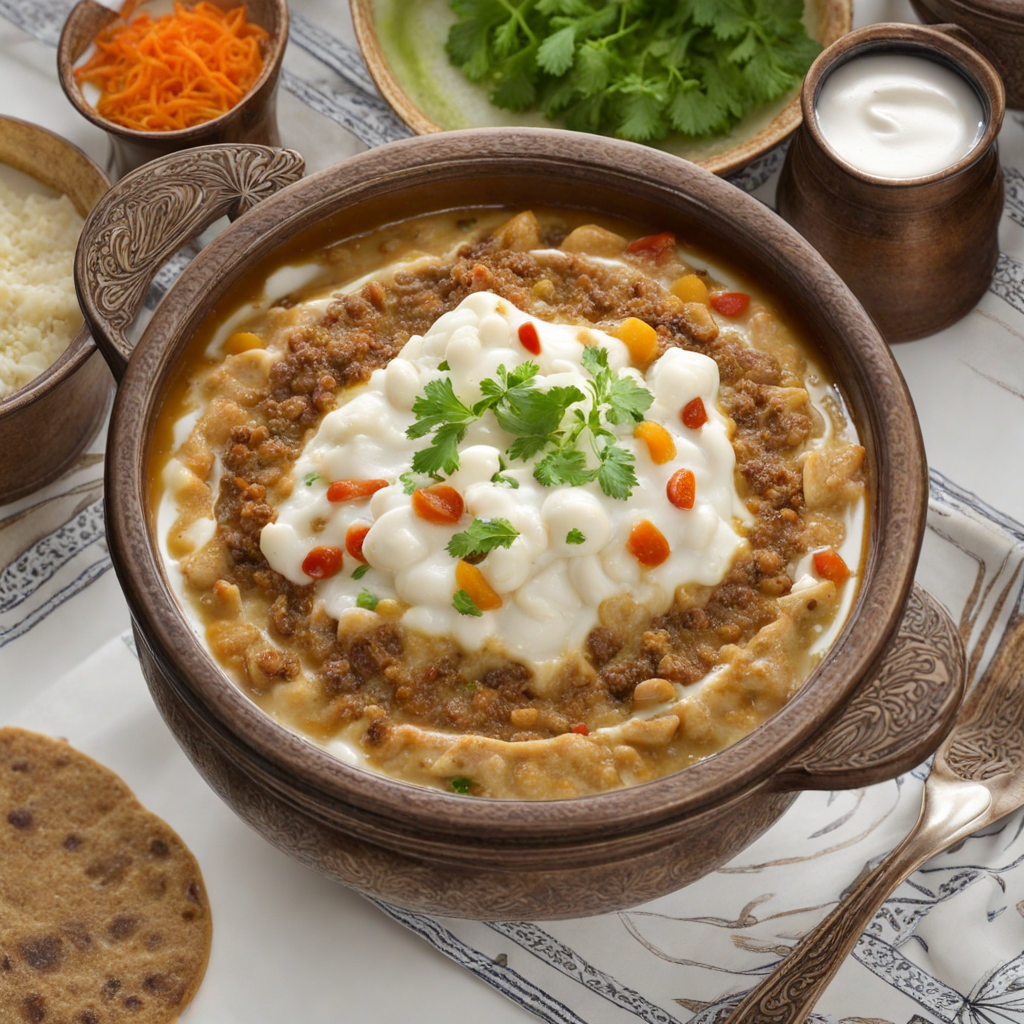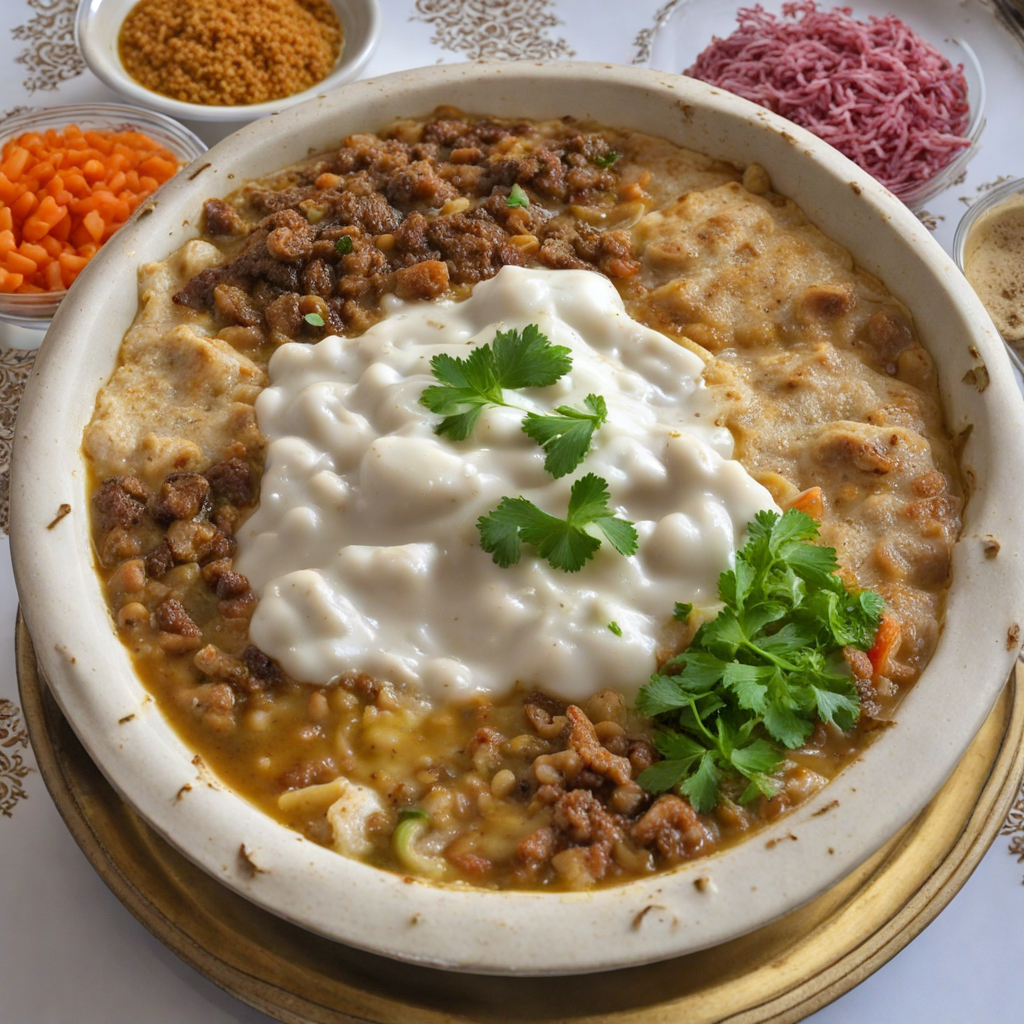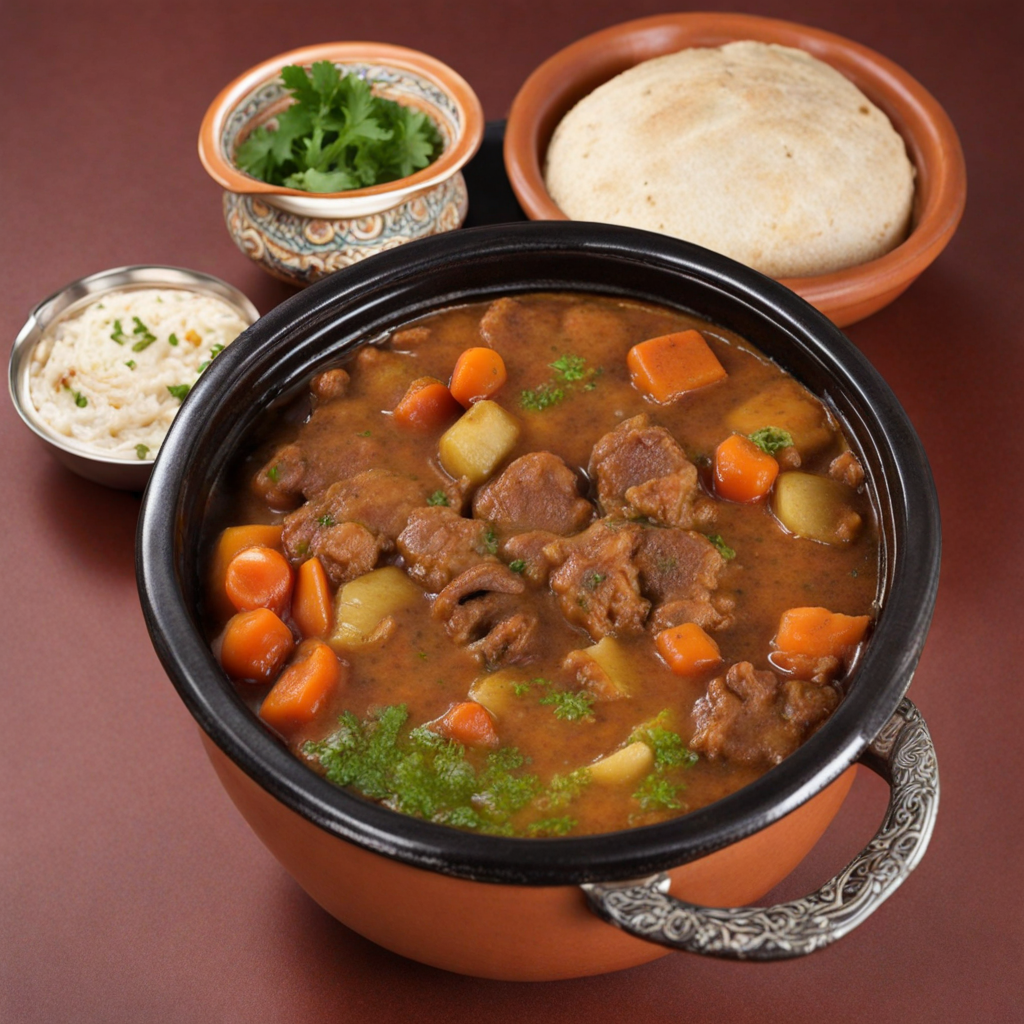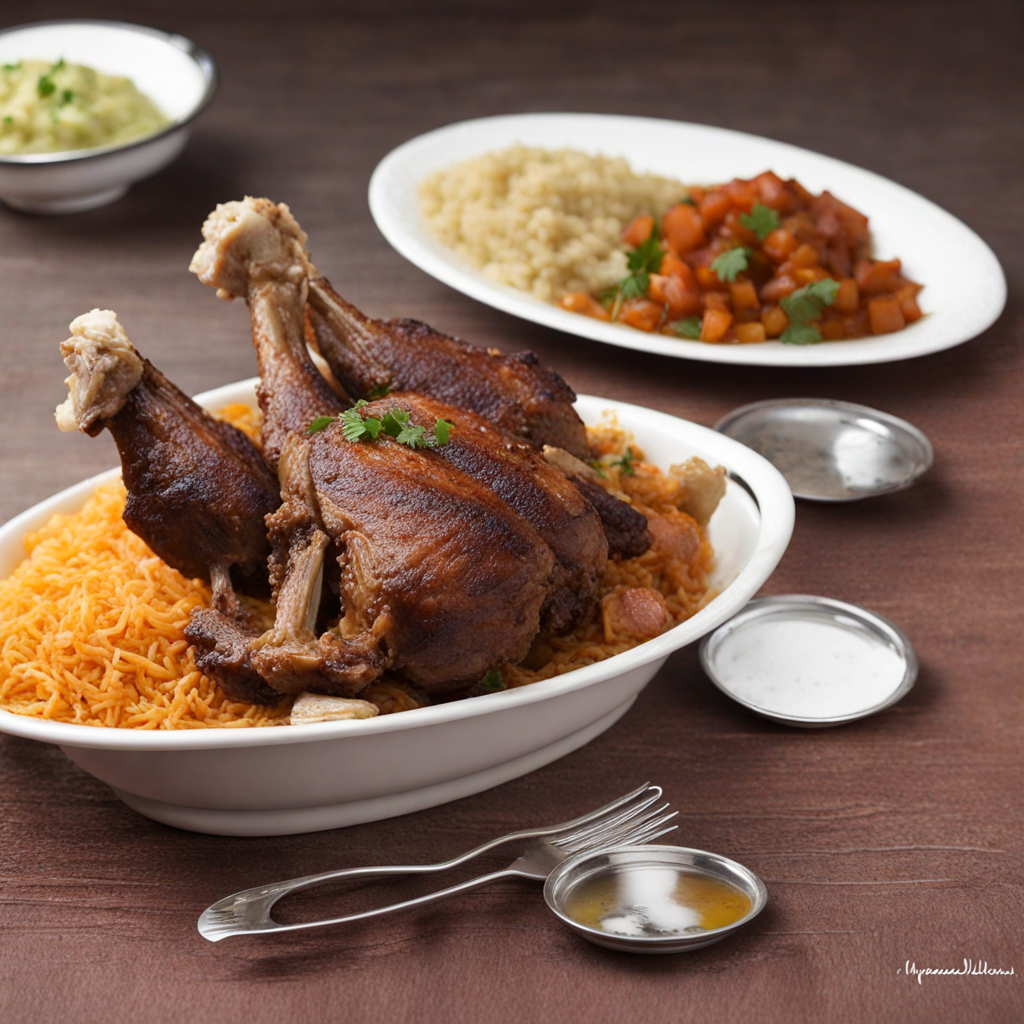Fatteh
Fatteh is a delightful and hearty dish originating from Yemen that offers a unique blend of flavors and textures, making it a must-try for anyone looking to explore Middle Eastern cuisine. At its core, Fatteh consists of layers of crispy bread, usually torn pita or flatbread, which serves as the foundation of the dish. This bread is then generously topped with a mixture of savory ingredients, including tender morsels of meat such as chicken or lamb, along with rich yogurt, chickpeas, and a variety of spices that create a warm and inviting aroma. The combination of these components results in a comforting meal that is both satisfying and indulgent. One of the standout features of Fatteh is the use of spices that reflect the rich culinary heritage of Yemen. Traditional seasonings like cumin, turmeric, and coriander intermingle with the yogurt and meat, infusing the dish with layers of flavor that are both aromatic and vibrant. A drizzle of garlicky tahini sauce can be added for extra creaminess and depth, while a sprinkle of fresh herbs such as parsley or cilantro brightens the dish and adds a touch of freshness. The balance of spices and textures creates a captivating eating experience that is sure to intrigue the palate. Fatteh is often served as a communal dish, encouraging sharing and togetherness, which is a hallmark of Yemeni culture. It is commonly enjoyed as a main course but can also be served as a flavorful appetizer. The combination of crispy bread, creamy yogurt, and spiced meat makes it a versatile dish that can be tailored to individual tastes, allowing for variations that include different proteins or additional vegetables. Whether you're enjoying it at a bustling market in Yemen or recreating it in your own kitchen, Fatteh promises a satisfying and delicious journey into the heart of Yemeni cuisine.
How It Became This Dish
The History of فتة (Fattah) in Yemen Introduction: The Essence of فتة فتة (Fattah) is a traditional Yemeni dish that embodies the rich tapestry of Yemen's culinary heritage. This dish, characterized by layers of bread, meat, and spiced broth, is more than just a meal; it is a cultural emblem that signifies unity, hospitality, and the deep-rooted traditions of Yemeni society. To understand فته, we must explore its origins, cultural significance, and evolution through time. Origins: The Roots of Fattah The origins of فته can be traced back to the ancient practices of the Arabian Peninsula, where bread has long been a staple food. The word "فتة" itself is derived from the Arabic root "ف ت" which relates to breaking or tearing, signifying the act of tearing bread into pieces. This practice dates back centuries, with bread being a central component of Middle Eastern diets. Historically, Yemen has been a crossroads of trade, influenced by various cultures and culinary practices. The country's mountainous terrain and arid climate shaped its agriculture, leading to the use of staple grains like wheat and barley. Bread was often made from these grains and served as the base for many dishes, including فته. Fattah's specific genesis is believed to coincide with the rise of the Yemeni Islamic civilization during the 7th century. As Islam spread across the Arabian Peninsula, so too did the culinary traditions associated with it. Fattah, with its communal nature, became a dish that reflected the values of hospitality and sharing that are central to Islamic culture. Cultural Significance: A Symbol of Unity and Hospitality In Yemeni culture, فته is more than just food; it is a symbol of togetherness. It is often prepared for special occasions such as weddings, religious celebrations, and family gatherings. The act of sharing a meal, particularly one as communal as فته, reinforces social bonds and expresses hospitality. In many Yemeni households, the preparation of فته becomes a family affair, with members coming together to cook and share stories. The dish is typically served on a large platter, where everyone gathers around, tearing off pieces of bread and dipping them into the flavorful broth, which is often made with lamb or chicken. This communal eating experience fosters a sense of belonging and inclusion, making فته not just sustenance but a cherished ritual. Furthermore, فته is often associated with the concept of "Baraka," or divine blessing. Sharing food is seen as a way to invoke prosperity and well-being, and the preparation of a generous platter of فته is viewed as an act of goodwill. In this context, the dish plays a crucial role in social cohesion and the reinforcement of cultural identity. Development Over Time: Evolution of Fattah As Yemen's socio-political landscape evolved, so too did فته. The dish has adapted to incorporate various ingredients and cooking techniques influenced by the region's diverse cultures and available resources. In the pre-Islamic era, Yemen was known for its trade networks, which facilitated the movement of spices, herbs, and other culinary elements. The introduction of spices such as cumin, coriander, and turmeric into Yemeni cuisine significantly impacted the flavor profile of فته. These spices not only enhanced the dish's taste but also contributed to its nutritional value, reflecting the historical reliance on local ingredients. During the Ottoman Empire's rule in the 16th century, Yemeni cuisine experienced further transformation. The Ottomans brought with them new culinary techniques and ingredients, leading to more elaborate versions of فته. The use of yogurt, for instance, became popular, adding a tangy richness to the dish. This period also saw the introduction of new meats, which diversified the types of فته that could be made. In contemporary Yemen, فته continues to be a staple dish, but its preparation can vary significantly from region to region. Coastal areas might incorporate seafood, while mountainous regions might focus on lamb or goat. Additionally, the rise of urbanization and globalization has led to the emergence of modern interpretations of فته, where chefs experiment with fusion cuisines, infusing international elements while still honoring traditional practices. Despite these changes, the essence of فته remains intact. It continues to be a beloved dish in Yemeni households, often served during Ramadan, Eid celebrations, and other significant events. The traditional recipe is still passed down through generations, ensuring that the cultural significance of the dish endures. Conclusion: The Enduring Legacy of فتة فتة is a dish that encapsulates the history, culture, and spirit of Yemen. Its origins are deeply rooted in the agricultural practices of the region, while its cultural significance as a symbol of unity and hospitality reflects the values of Yemeni society. Over the centuries, فته has evolved, adapting to new influences while remaining a cherished traditional dish. Today, as Yemen faces various challenges, including conflict and economic hardship, the act of preparing and sharing فته serves as a reminder of resilience and community. The dish is not just a culinary delight; it is a testament to the enduring legacy of Yemeni culture, embodying the heart and soul of a nation. In a world that is increasingly fast-paced and fragmented, the communal experience of enjoying فته offers a moment of pause—an opportunity to connect with family, heritage, and the simple joys of sharing good food. As such, فته will continue to hold a special place in the hearts and homes of Yemenis, preserving its significance for generations to come.
You may like
Discover local flavors from Yemen







